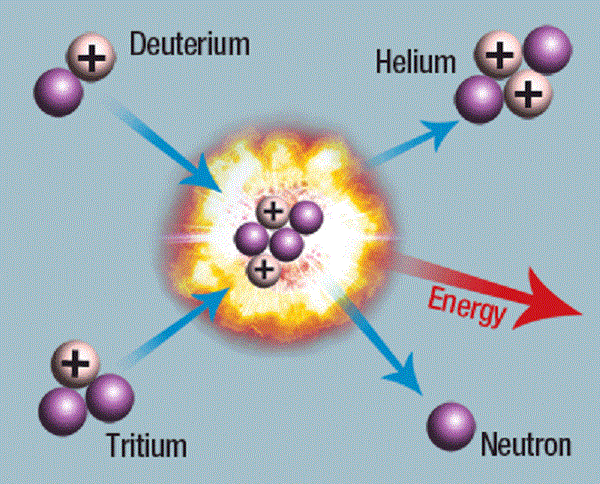The scientists at Lawrence Livermore National Laboratory (LLNL) have achieved fusion ignition and energy break-even. On 5th December 2022, the research team conducted controlled fusion experiment using lasers when 192 laser beams delivered more than 2 million joules of UV energy to a tiny fuel pellet in the cryogenic target chamber and achieved energy break-even, meaning the fusion experiment produced more energy than provided by the laser to drive it. This breakthrough was achieved for the first time in history following decades of hard work. This is a milestone in science and has significant implications for the prospect of clean fusion energy in the future towards net-zero carbon economy, for combating climate change and for maintaining nuclear deterrent without resorting to nuclear testing towards national defence. Earlier, on 8thAugust 2021, the research team had reached at the threshold of fusion ignition. The experiment had produced more energy than any other previous fusion experiment but energy break-even was not achieved. The latest experiment conducted on 5th December 2022 has accomplished the feat of energy break-even thus providing proof-of-concept that controlled nuclear fusion can be exploited to meet energy needs, though practical commercial fusion energy application may still be very distant.
Nuclear reactions yield large amounts of energy equivalent to the amount of mass lost, as per mass-energy symmetry equation E=MC2 of Einstein. Fission reactions involving the breakdown of nuclei of nuclear fuel (radioactive elements such as uranium-235) are currently employed in the nuclear reactors for the generation of power. However, nuclear fission-based reactors run high human and environmental risks as evident in the case of Chernobyl, and are notorious for generating dangerous radioactive wastes with very long half-lives that are extremely difficult to dispose.
In nature, stars like our sun, nuclear fusion involving merging of smaller nuclei of hydrogen is the mechanism of energy generation. Nuclear fusion, unlike nuclear fission, requires extremely high temperature and pressure to enable nuclei to merge. This requirement of extremely high temperature and pressure is met at the core of sun where fusion of hydrogen nuclei is the key mechanism of energy generation but recreating these extreme conditions on earth has not been possible so far in a controlled laboratory condition and as a result, nuclear fusion reactors are not a reality yet. (Uncontrolled thermonuclear fusion at extreme temperature and pressure created by triggering of fission device is the principle behind the hydrogen weapon).
It was Arthur Eddington who first suggested, way back in 1926, that stars draw their energy from the fusion of hydrogen into helium. The first direct demonstration of nuclear fusion was in laboratory in 1934 when Rutherford showed the fusion of deuterium into helium and observed “an enormous effect was produced” during the process. In view of its huge potential to provide unlimited clean energy, there have been concerted efforts by scientists and engineers across the world to replicate nuclear fusion on Earth but it has been an uphill task.
At extreme temperatures, electrons get separated from the nuclei and atoms become ionised gas comprising of positive nuclei and negative electrons, what we call plasma, which is one millionth times less dense than the air. This makes fusion environment very tenuous. For nuclear fusion to take place in such an environment (that could yield appreciable amount of energy), three conditions should be met; there should be very high temperature (that could provoke high-energy collisions), there should be sufficient plasma density (to increase probability of collisions) and the plasma (which has a propensity to expand) should be confined for a sufficient duration of time to enable fusion. This makes development of infrastructure and technology to contain and control hot plasma the key focus. Strong magnetic fields could be used to deal with plasma as in the case of Tokamak of ITER. Inertial confinement of plasma is another other approach in which capsules filled with heavy hydrogen isotopes are imploded using high-energy laser beams.
Fusion studies conducted at Lawrence Livermore National Laboratory (LLNL) of NIF employed laser-driven implosion techniques (inertial confinement fusion). Basically, millimetre-sized capsules filled with deuterium and tritium were imploded with high-power lasers which generate x-rays. The capsule gets heated and turn into plasma. The plasma accelerates inwards creating extreme pressure and temperature conditions when fuels in the capsule (deuterium and tritium atoms) fuse, releasing energy and several particles including alpha particles. The released particles interact with the surrounding plasma and heat it up further leading to more fusion reactions and release of more ‘energy and particles’ thus setting up a self-sustaining chain of fusion reactions (called ‘fusion ignition’).
The fusion research community has been trying for several decades to achieve ‘fusion ignition’; a self-sustaining fusion reaction. On 8th August 2021, the Lawrence Laboratory team came at the threshold of ‘fusion ignition’ which they have achieved on 5th December 2022. On this day, controlled fusion ignition on Earth became a reality – a milestone in science attained!
***




































